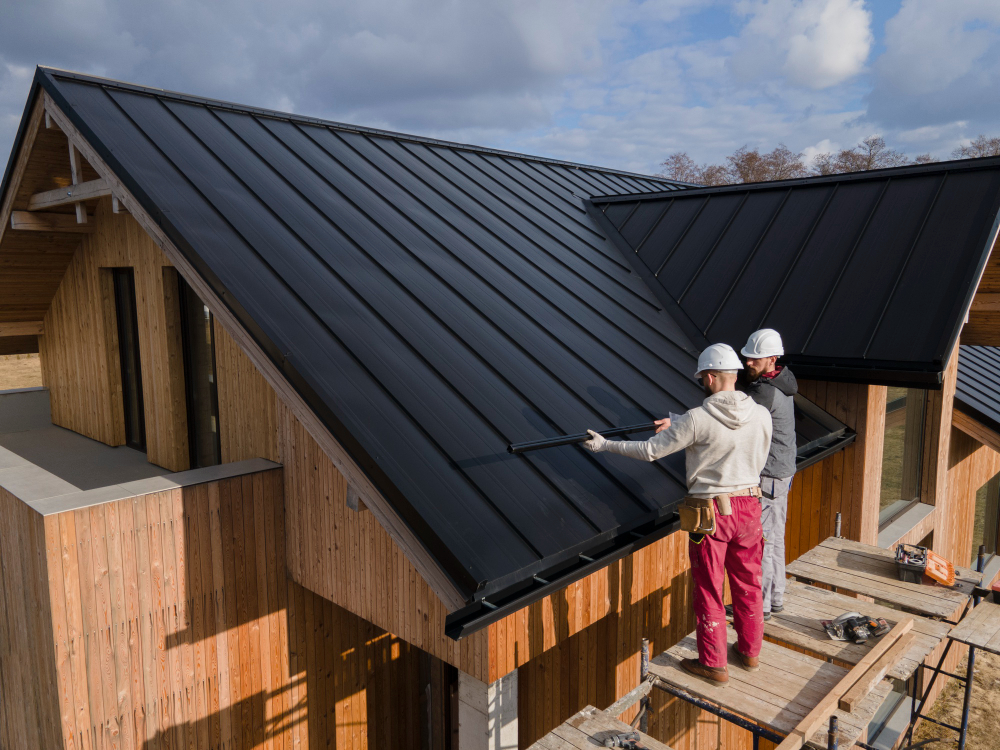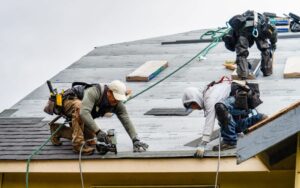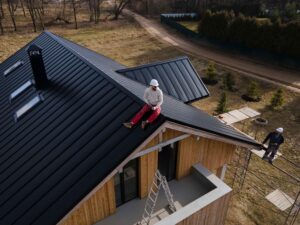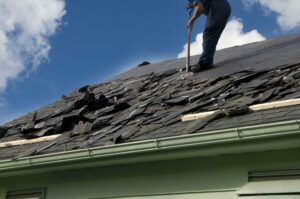Deciding whether to repair or replace your roof depends on its condition and age. If your roof is nearing the end of its lifespan—typically 15 to 30 years for asphalt and over 50 for metal—replacement might be wiser. However, for minor damage, repairs can save you money upfront. Consider repair costs versus long-term expenses, too. Regular inspections and local climate can also impact your choice. Understanding these factors will guide you to the best decision.
Understanding the Lifespan of Your Roof
Understanding the lifespan of your roof is essential, especially if you’re trying to decide between roof repairs and roof replacement. Different roof materials, like asphalt shingles, metal, or tile, have varying lifespans that directly influence your decision. For instance, asphalt shingles typically last 15 to 30 years, while metal roofs can endure over 50 years. Regular maintenance practices, such as inspecting for leaks, cleaning gutters, and replacing damaged shingles, can greatly extend your roof’s life. Neglecting these tasks may lead to premature deterioration, prompting costly repairs or an early replacement. By evaluating the quality of your roof materials and implementing consistent maintenance, you can effectively gauge its longevity and make informed choices about its upkeep.
Assessing the Extent of Damage
When evaluating whether to repair or replace your roof, measuring the extent of damage is an essential step. Start with a thorough damage inspection to identify issues like missing shingles, leaks, or structural wear. Use binoculars for a distant view and a ladder for close-up checks, ensuring you note any signs of moisture or deterioration. Once you’ve assessed the damage, consider the appropriate repair techniques. Minor leaks or localized damage might only require patching or shingle replacement, while widespread issues could signal deeper problems. It’s vital to determine if the existing materials can support repairs or if their condition necessitates a complete replacement. This careful assessment will guide your decision-making process and ultimately protect your investment.
The Cost Factor: Repair vs. Replacement
Deciding whether to repair or replace your roof often hinges on the cost implications of each option. Repair costs are generally lower than replacement expenses, making repairs an appealing choice for minor issues. However, if your roof shows significant wear or damage, you might face escalating repair costs over time, potentially leading to a more expensive fix later on. On the other hand, while replacement expenses are higher upfront, investing in a new roof can save you money in the long run by eliminating the need for frequent repairs. Additionally, a new roof often comes with warranties that can further offset future costs. Ultimately, evaluating the immediate and long-term financial impact is essential in making the right decision for your home.
The Impact of Climate and Weather Conditions
Climate and weather conditions play an essential role in determining whether you should repair or replace your roof. If you live in an area with extreme weather patterns—like heavy rainfall, snow, or high winds—your roof’s durability and climate resilience become critical factors. A roof that endures harsh conditions may require replacement, especially if it shows significant wear and tear. Conversely, minor damage in a milder climate might only need repairs. It’s crucial to assess your roof’s condition relative to your local climate. Regular inspections can help you gauge whether the existing structure can withstand future weather challenges or if a new roof is necessary for maximum protection and longevity.
Long-Term Benefits of Each Option
Understanding the long-term benefits of repairing or replacing your roof can greatly influence your decision-making process. Repairing your roof is often a lower upfront cost and can extend its life, making it a viable long-term investment if you’re looking to manage maintenance costs effectively. However, if your roof is nearing the end of its lifespan or has extensive damage, replacement may be the smarter choice. While it requires a higher initial investment, a new roof typically comes with warranties and can considerably reduce future maintenance costs. Ultimately, weighing these long-term benefits will help you decide which option aligns best with your financial goals and home longevity. Consider your budget and the roof’s current condition before making a commitment.
Making the Decision: Key Considerations
When evaluating whether to repair or replace your roof, several key factors come into play that can shape your decision. First, consider the age and condition of your roof; if it’s nearing the end of its lifespan, replacement might be more cost-effective in the long run. Next, assess the extent of damage. Minor issues often warrant repairs, while widespread problems may indicate a need for replacement. Your budget is another significant factor; repairs generally cost less upfront but may require ongoing roof maintenance. Finally, reflect on homeowner preferences—some prioritize aesthetics and long-term warranties that come with a new roof. Balancing these considerations will help you make an informed choice that aligns with your needs and financial situation.
is it better to repair a roof or replace it?
roof replacement
roofing
roofer
roof
roof
roof
roof
roof
roof
roof
roof
roofers
cool roof
cool roof
roof decking
roof decking
roof decking
roofing shingles
roofing shingles
roofs
roofs
shingle roof
shingle roof
shingle roof
shingle roof
shingle roof
asphalt shingles
shingles
shingles
shingles
shingles
shingles
shingles
shingles
asphalt shingle
asphalt shingle
asphalt shingle
asphalt shingle
shingle
shingle
is it better to repair a roof or replace it?
roof repair
roof repair
large roof repair
roof replacement isn
different roof repairs
roof replacement
roof replacement
roof replacement
roof replacement
roof replacement
roof repairs
roof repairs
roof replacements
roof replacements
full roof replacement
full roof replacement
roof damage
roof damage
roof needs
new roof
new roof
roofing
roofing
roofing
roofing
roofing
roofing
roofing
roofing
roofing
roofing
roof system
old roof
roof shows
roof shows
great roofing contractor
great roofing contractor
roof components
roof components
problematic roof
different roof sections
current roof
experienced roofing contractor
experienced roofing contractor
roofing project
roofing industry
potential roofers
continuous roof
roof flashing
roof ages
reputable roofer
roof leak
roof leak
roof leak
roof leak
asphalt shingle roof
asphalt shingle roof
asphalt shingle roof
asphalt shingle roof
asphalt shingle roof
roof color
roof color
roof color
roof color
roof color
roof color
roof penetrations
multiple repairs
multiple repairs
repairs
repairs
repairs
repairs
repairs
repairs
successful repair
architectural asphalt shingles
repair
repair
repair
repair
repair
ridge shingles
ridge shingles
shingle replacements
significant repair
you should consider a replacement
architectural asphalt shingle
architectural asphalt shingle
shingle damage
old asphalt shingle
full replacement
maintenance issue
replacement
replacement
replacement
replacement
replacement
replacement
replacement
damage
damage
damage
damage
damage
damage
damage
damage
shingle color
shingle color
shingle color
shingle color
shingle color
shingle color
shingle
shingle
shingle
shingle
shingle
shingle
shingle
shingle
replacements





